In a few weeks, the most ambitious, costly robot probe ever built, the £6.8bn James Webb space telescope, will be blasted into space on top of a giant European Ariane 5 rocket. The launch of the observatory – which has been plagued by decades of delays and massive cost overruns – promises to be the most nervously watched liftoff in the history of unmanned space exploration.
The observatory – built by Nasa with European and Canadian space agency collaboration – has been designed to revolutionise our study of the early universe and to pinpoint possible life-supporting planets inside our galaxy. However, its planning and construction have taken more than 30 years, with the project suffering cancellation threats, political controversies and further tribulations. In the process, several other scientific projects had to be cancelled to meet the massive, swelling price tag of the observatory. As the journal Nature put it, this is “the telescope that ate astronomy”.
Now scientists are about to discover if those sacrifices and soaring costs are justified when, according to current schedules, the telescope is fired into space on 22 December. “It’s the launch of a generation,” says Daniel De Chambure of the European Space Agency (Esa).
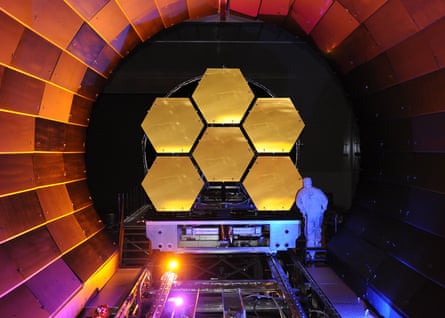
Designed as a replacement for the Hubble space telescope – still in operation after its 1990 launch – the James Webb is a far bigger, much more complex instrument with many more ambitious goals. For a start, it will not study the visible part of the electromagnetic spectrum – as does the Hubble and most ground-based telescopes – but will gather only infrared radiation.
“There are many reasons for this,” says Prof Gillian Wright, director of the UK Astronomy Technology Centre in Edinburgh. “For a start, infrared is the perfect part of the spectrum for looking through dust, and that is important because stars and planets form in regions full of dust. So if you want to understand where and how other solar systems are being created, the James Webb should provide crucial data.”
In addition, atmospheres of planets that might contain chemicals such as methane – a gas associated with biological processes – are also best studied by gathering infrared radiation and could indicate if they are capable of supporting life.
“Spectroscopy is an important way of looking at the formation of promising planets in our own galaxy,” adds Wright, who is the European principal investigator for the team that built one of the Webb’s four main instruments: the MIRI or Mid-infrared instrument. (The other three devices will also study the infrared spectrum but at differing wavelengths.)
This part of the James Webb’s operations is essentially a local affair and will involve looking at stars in our own galaxy. However, astronomers also want to study the very early universe in the period that followed the birth of the cosmos in the big bang 13.8bn years ago. That means focusing on very, very distant galaxies. And again studying infrared radiation provides key advantages.
“A telescope is a time machine. It lets you see what the universe was like in the past – because light takes a finite time to reach us from a distant object,” says Prof Martin Ward of Durham University, who is a member of the MIRI science consortium. “However, light gets fainter and redder the further back you look into the universe until its wavelength reaches the infrared part of the spectrum. So if we want to study how the first stars, black holes and galaxies formed, you also need an infrared telescope.”
Ground observatories can operate at infrared wavelengths but for prime-quality observations telescopes really need to be lifted above Earth’s warm, wet atmosphere, which blocks much of the infrared radiation that reaches us from space. Unfortunately, putting such a telescope into orbit has been so demanding it has led to countless delays as thousands of scientists and engineers have struggled to overcome the technical hurdles thrown up by the James Webb’s ambitious design.
One problem has been the simple fact that the telescope will not be able to rely on human aid once launched. Hubble still flies in low Earth orbit, where astronauts on the space shuttle were able to repair and service it. But the shuttle was grounded a decade ago and so the James Webb has been designed to operate without any prospect of hands-on help from humans.
Instead, it will be fired on a trajectory that will take it into orbit round the sun – to a region known as the second Lagrange point (L2), where, 1m miles from the Earth, the gravity of our planet and the gravity of the sun align in such a way that the telescope can be kept almost stationary in roughly the same position and can operate continuously for 24 hours a day. In addition, small gas engines will be burned to ensure the craft remains at L2.
At Lagrange 2, it will also be easier to keep the James Webb cold. The telescope has been designed to operate at around 40C above absolute zero (about -233C) so that its instruments do not generate spurious heat signals that could swamp the faint infrared radiation it receives from the other end of the universe. Far away from its warm home planet, the telescope will be protected by a five-layer-thick shield that will block out radiation from the sun and Earth, and its MIRI will also be chilled by a liquid helium refrigerator, the James Webb should be able to keep its cool for up to a decade, its designers hope.
But first the observatory will have to overcome a journey riddled with risk. For a start there is the danger of launcher failure. The Ariane 5 has notched up a total 111 liftoffs since 1996, 106 of which were successful. More importantly, its failures occurred early in the rocket’s development schedule and it is now rated as a highly reliable launcher. Nevertheless there is a chance it could fail as it lifts off from Esa’s space port at Kourou in French Guiana. And given the amount of money, time and effort already expended on the project, that is still a scary prospect.
And that is just the beginning. On its months-long journey to its new home at Lagrange 2, the telescope will be slowly unfurled as it cruises across space. First to be released will be huge sheets of wafer-thin foil that will act like giant parasols for keeping the telescope cool. Next to appear will be James Webb’s main mirror, the heart of the telescope that will collect that infrared radiation from across the universe. It is seven times bigger than Hubble’s mirror – far too large to be accommodated as a single item. As Wright says: “It is a simple fact that putting large objects in space is a lot harder than launching small ones. That has been a key technical challenge for the telescope.”
To get round the size issue, the James Webb’s designers have built a mirror that is constructed of 18 hexagons of gold-coated beryllium mirror. These will unfurl like a blooming flower and slot together automatically to create a 6.5-metre (21ft) mirror.
Everything to do with this unfolding, this unprecedented automated self-assembly, will have to work flawlessly, a process that will take around six months to complete. Only then will astronomers find out if the James Webb is going to be one of the great technological triumphs of the 21st century or a dollar-devouring disaster. As Thomas Zurbuchen, Nasa’s associate administrator for science missions, puts it: “Those who are not worried or even terrified about this are not understanding what we are trying to do.”
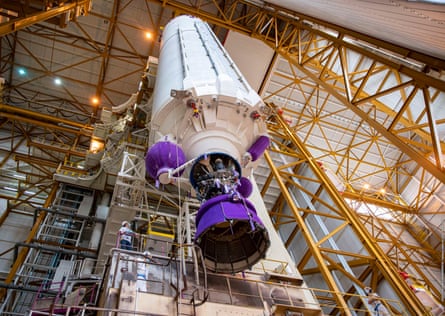
A different perspective on the caution and delay that has affected the telescope is provided by Faye Hunter of Airbus, who acted as project manager for the MIRI instrument 10 years ago. “I was just going into secondary school when the idea of the James Webb telescope was agreed,” she says. “Now I am a mother, and a successful project manager and the telescope still has not been launched.”
However, Hunter stresses the care and attention that has been taken to make sure the observatory operates perfectly once in orbit, a process that has involved more than 200 engineers and scientists working on MIRI alone. “A European consortium provided the components and MIRI was assembled from these at the Rutherford Appleton Laboratory in Oxfordshire,” she adds.
“Then it was put in test chambers, which had all air sucked from them, and temperatures were reduced to levels that the telescope will experience in space. After it passed these tests, MIRI was sent to Nasa, integrated with the telescope’s other three infrared detectors and again put through more cryovac tests. It takes a long time to do this sort of thing but it will be worth the effort.”
The decades-long delay inflicted on the James Webb has had other consequences, however. Since it was originally named in 2002, politics has moved on. In 2021, many scientists regard the name as inappropriate since they accuse James Webb – a former Nasa administrator – of purging gay and lesbian people from jobs in Nasa in the 1950s and 1960s and have pressed for the telescope to be given another name. The space agency has refused such demands, though the controversy is likely to linger.
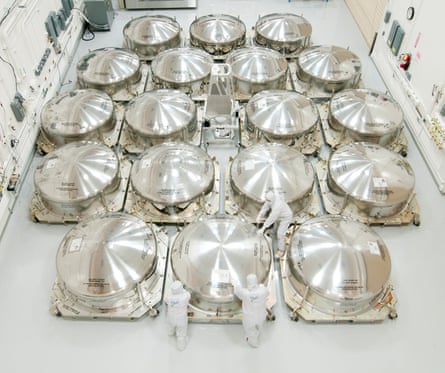
It also remains to be seen what the James Webb will discover. In its three decades of operations, Hubble helped pin down the age of the universe to 13.8bn years ago; determined the rate at which the universe is expanding; and showed that nearly every major galaxy is anchored by a black hole at its core.
This time, astronomers will be expecting even more. Among their hopes is the prospect of imaging the first galaxies to form after the big bang, understanding how stars are born and evolve, and investigating the potential for life to appear in planetary systems. All this will have to be done in a decade, the maximum likely lifetime of the James Webb. After 10 years, it is expected that it will run out of fuel and the telescope will no longer be able to keep itself located at L2. Then it will drift off course – to become the most expensive piece of space junk ever built.
“It is unlikely an observatory as costly and complex as the James Webb will be constructed again for a very long time,” says Ward. “Big observatories like these are like Christmas trees. They are fitted with so many different instruments that are attached like baubles. In future, we can expect that smaller and cheaper telescopes with more specific roles will be preferred by space agencies. So yes, in a sense, this could be the last Christmas for space astronomy.”
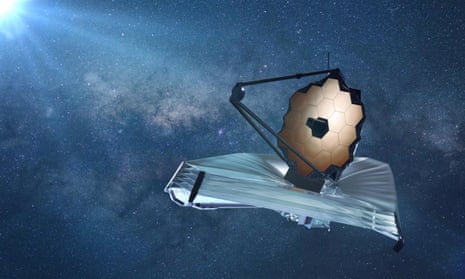




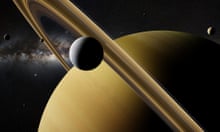
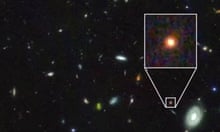
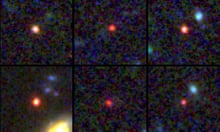

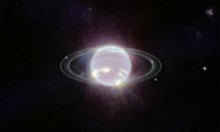
Comments (…)
Sign in or create your Guardian account to join the discussion